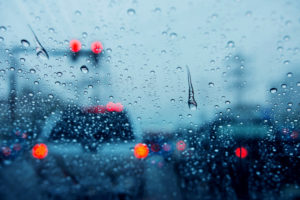What Do We Mean by Severe Weather?

While an extremely hot or snowy day might seem pretty “severe” to you, they’re not actually considered to be severe by the experts. The National Weather Service recognizes five types of weather as being severe. These include tornadoes, floods, lightning, hail, and wind. Let’s take a closer look at each.
Tornadoes
With a mix of very high and very low temperatures throughout the year, it’s not at all uncommon for Colorado to experience tornadoes during the spring and summer months. Tornadoes are defined as violently rotating columns of air that are pendant to cumulonimbus clouds. In order to qualify as a tornado, the circulation must reach the ground (touchdown). Tornado watches are issued by the National Weather Service when the conditions are conducive to the formation of a tornado. A warning is only issued when a tornado has been sighted by spotters or radar. During a tornado watch, you might consider closing your shutters or otherwise boarding up your windows in order to minimize damage in the event of a touchdown. When a warning is issued, you must seek shelter immediately.
Floods
There are multiple types of flooding that can occur in Colorado, but one of the most dangerous types is a flash flood. Whenever heavy rainfall occurs over a very short period of time, flash flooding can occur. Here, streets may begin to overflow with water, turning them into virtual rivers and streams. We recommend keeping sandbags on hand during the spring and summer in order to protect your driveway and home against rising waters. If you are told to evacuate your home for your safety, it’s important that you do so right away.
Lightning
Hundreds of people (more than 400) are struck by lightning in the United States each year, and at least 55 of these are killed. The high heat and electrical charge associated with lightning makes it extremely dangerous to life and property. Remember that where there is thunder, there is lightning, and when there is lightning, you should seek shelter and be on alert for potential roof fires and falling tree branches.
Hail
Despite the low priority that most people give hail as a concern, damage from hail is one of the top two insurance claims filed in the state of Colorado that are related to severe weather. No matter how large or how small the falling chunks of ice actually are, they have the potential to wreak havoc on your property, damaging windows, denting siding, and even puncturing rooftops. After hail occurs, it’s very important to assess your home for any damages and have them repaired right away.
Wind
Strong downbursts of wind can be extremely damaging. Microbursts, for example, can reach up to 168 mph. When gusts of wind occur, roofing and siding can be torn off, tree limbs and power lines may fall, windows can be broken, and lives are put in danger. Always seek shelter when a severe wind warning is issued, and make an attempt to close shutters, board windows, or use furniture to block off glass.
Has your home been impacted by severe weather damage? If so, the pros at Abbotts Fire & Flood can help. Give us a call today.

